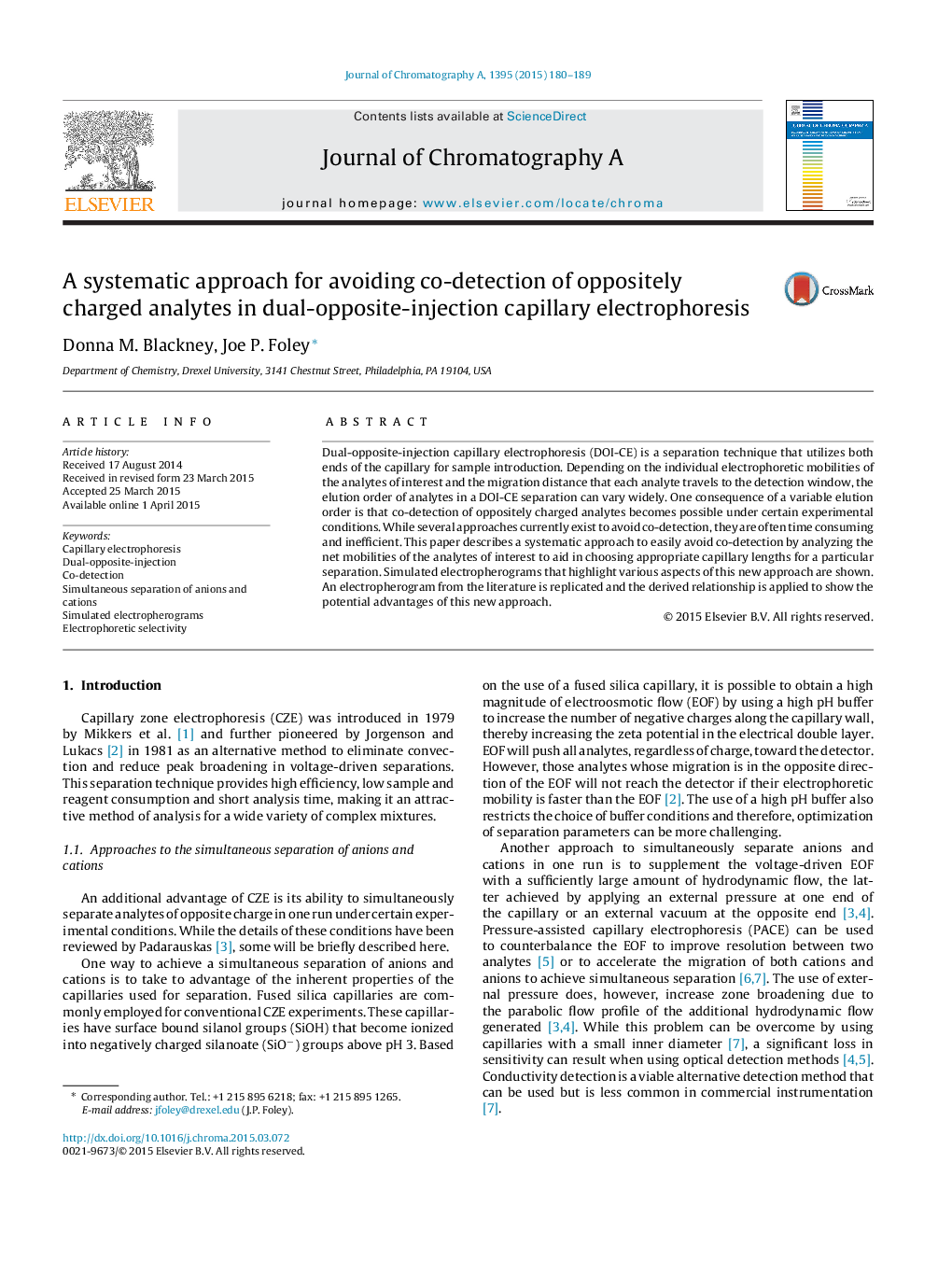| Article ID | Journal | Published Year | Pages | File Type |
|---|---|---|---|---|
| 7611882 | Journal of Chromatography A | 2015 | 10 Pages |
Abstract
Dual-opposite-injection capillary electrophoresis (DOI-CE) is a separation technique that utilizes both ends of the capillary for sample introduction. Depending on the individual electrophoretic mobilities of the analytes of interest and the migration distance that each analyte travels to the detection window, the elution order of analytes in a DOI-CE separation can vary widely. One consequence of a variable elution order is that co-detection of oppositely charged analytes becomes possible under certain experimental conditions. While several approaches currently exist to avoid co-detection, they are often time consuming and inefficient. This paper describes a systematic approach to easily avoid co-detection by analyzing the net mobilities of the analytes of interest to aid in choosing appropriate capillary lengths for a particular separation. Simulated electropherograms that highlight various aspects of this new approach are shown. An electropherogram from the literature is replicated and the derived relationship is applied to show the potential advantages of this new approach.
Keywords
Related Topics
Physical Sciences and Engineering
Chemistry
Analytical Chemistry
Authors
Donna M. Blackney, Joe P. Foley,
